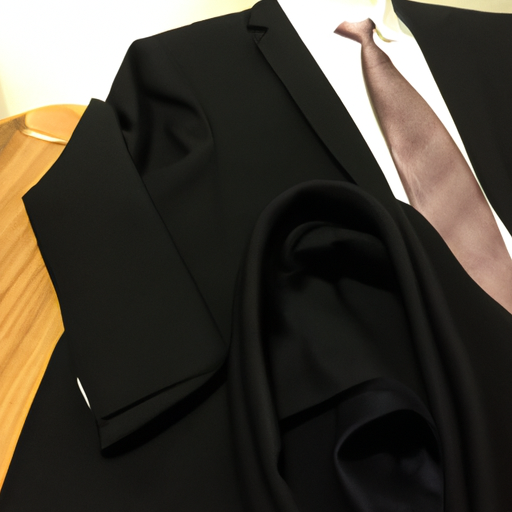-
Table of Contents
- Introduction
- The Pros and Cons of a Strict Dress Code
- How to Respectfully Challenge a Dress Code
- The Impact of Dress Codes on Student Performance
- The Benefits of a Dress Code for Professional Settings
- How to Create a Dress Code That Is Fair and Inclusive
- The Legal Implications of Dress Codes
- How to Address Dress Code Violations in the Workplace
- Q&A
- Conclusion
Introduction
A dress code is a set of guidelines that dictate what is and is not acceptable to wear in a particular setting. It is important to understand what is not acceptable for dress code in order to ensure that everyone is comfortable and that the environment is professional and appropriate. This article will discuss some of the most common items that are not acceptable for dress code, including clothing that is too revealing, clothing with offensive messages, and clothing that is not appropriate for the occasion.
The Pros and Cons of a Strict Dress Code
The implementation of a strict dress code in the workplace can be a controversial topic. On one hand, it can be seen as a way to promote professionalism and create a unified atmosphere. On the other hand, it can be seen as an infringement on personal freedom and expression. It is important to consider both the pros and cons of a strict dress code before making a decision.
Pros
One of the main advantages of a strict dress code is that it can help to create a professional atmosphere. By requiring employees to dress in a certain way, it can help to promote a sense of unity and respect in the workplace. It can also help to create a sense of pride in the company and its employees. Additionally, a strict dress code can help to ensure that employees are dressed appropriately for the job they are doing. This can help to ensure that employees are taken seriously and that their work is respected.
Cons
One of the main disadvantages of a strict dress code is that it can be seen as an infringement on personal freedom and expression. By requiring employees to dress in a certain way, it can be seen as a form of control and can lead to feelings of resentment. Additionally, a strict dress code can be expensive for employees, as they may need to purchase new clothing in order to comply with the dress code. Finally, a strict dress code can be difficult to enforce, as it can be difficult to determine if an employee is in compliance with the dress code.
In conclusion, there are both pros and cons to implementing a strict dress code in the workplace. It is important to consider both sides of the issue before making a decision. By weighing the pros and cons, employers can make an informed decision that is best for their company and their employees.
How to Respectfully Challenge a Dress Code
It is important to respect dress codes in the workplace, as they are often put in place to ensure a professional and safe environment. However, there may be times when you feel that a dress code is unfair or does not reflect the values of the organization. In these cases, it is possible to respectfully challenge a dress code.
First, it is important to understand the purpose of the dress code. Ask questions to gain a better understanding of why the dress code is in place and how it is enforced. This will help you to determine if the dress code is necessary and if it is being applied fairly.
Second, consider how you can make your case. If you feel that the dress code is outdated or does not reflect the values of the organization, you may want to present evidence to support your argument. This could include research on current trends in the industry or examples of other organizations that have more progressive dress codes.
Third, make sure to present your case in a respectful manner. Avoid making personal attacks or accusations, and focus on the facts. Be prepared to listen to the other side and be open to compromise.
Finally, if you are not satisfied with the outcome, consider other options. You may want to speak to a supervisor or human resources representative, or you may want to file a formal complaint.
By following these steps, you can respectfully challenge a dress code and ensure that your voice is heard.
The Impact of Dress Codes on Student Performance
The impact of dress codes on student performance is an important topic of discussion in many educational settings. Dress codes are often implemented in schools to promote a sense of order and respect among students, and to create a more professional learning environment. While dress codes can have a positive effect on student behavior, there is also evidence to suggest that they can have an impact on student performance.
Research has shown that dress codes can have a positive effect on student performance. Studies have found that students who adhere to dress codes tend to have higher grades and better attendance records than those who do not. This is likely due to the fact that dress codes can help create a sense of order and respect in the classroom, which can lead to improved focus and concentration. Additionally, dress codes can help students feel more confident and comfortable in their learning environment, which can lead to improved academic performance.
Dress codes can also have a negative impact on student performance. Some students may feel that dress codes are restrictive and can lead to feelings of frustration and resentment. This can lead to a decrease in motivation and engagement in the classroom, which can have a negative effect on student performance. Additionally, dress codes can be expensive for some families, which can lead to feelings of inequality and exclusion. This can lead to a decrease in student performance, as students may feel that they are not being treated fairly.
Overall, dress codes can have both positive and negative effects on student performance. While dress codes can help create a sense of order and respect in the classroom, they can also lead to feelings of frustration and exclusion. It is important for schools to consider the potential impacts of dress codes on student performance when making decisions about their implementation.
The Benefits of a Dress Code for Professional Settings
A dress code is an important part of any professional setting. It helps to create a sense of unity and professionalism among employees, and it can also help to create a positive impression of the company in the eyes of customers and clients.
One of the main benefits of a dress code is that it helps to create a sense of unity among employees. When everyone is dressed in a similar way, it helps to create a sense of belonging and camaraderie. This can help to foster a sense of team spirit and can make employees feel more comfortable in their work environment.
A dress code can also help to create a positive impression of the company in the eyes of customers and clients. When employees are dressed in a professional manner, it can give customers and clients the impression that the company is organized and professional. This can help to create a positive image of the company and can help to attract more customers and clients.
Finally, a dress code can help to create a sense of respect among employees. When everyone is dressed in a similar way, it can help to create a sense of respect and professionalism. This can help to create a more productive work environment and can help to foster a sense of respect among employees.
In conclusion, a dress code is an important part of any professional setting. It can help to create a sense of unity and professionalism among employees, and it can also help to create a positive impression of the company in the eyes of customers and clients. It can also help to create a sense of respect among employees, which can help to create a more productive work environment.
How to Create a Dress Code That Is Fair and Inclusive
Creating a dress code that is fair and inclusive is an important step in creating a safe and comfortable work environment. A dress code should be designed to ensure that all employees feel respected and comfortable in the workplace. Here are some tips for creating a dress code that is fair and inclusive:
1. Consider the purpose of the dress code. A dress code should be designed to ensure that all employees feel respected and comfortable in the workplace. It should also be designed to promote safety and productivity.
2. Establish clear guidelines. The dress code should be clearly defined and communicated to all employees. It should include specific guidelines for appropriate attire, such as the types of clothing that are acceptable and unacceptable.
3. Consider cultural and religious differences. The dress code should be designed to accommodate cultural and religious differences. For example, some religions require certain types of clothing, such as head coverings or long skirts.
4. Allow for flexibility. The dress code should allow for flexibility, such as allowing employees to wear clothing that is comfortable and appropriate for their job.
5. Consider the environment. The dress code should be designed to accommodate the environment in which the employees work. For example, if the workplace is hot, the dress code should allow for lighter clothing.
6. Provide resources. The dress code should include resources for employees who need help understanding or complying with the dress code. This could include providing access to a clothing allowance or offering assistance with finding appropriate clothing.
By following these tips, employers can create a dress code that is fair and inclusive. A dress code should be designed to ensure that all employees feel respected and comfortable in the workplace. It should also be designed to promote safety and productivity.
The Legal Implications of Dress Codes
Dress codes are a common feature of many workplaces, schools, and other organizations. While dress codes can be beneficial in creating a professional atmosphere and promoting a sense of unity, they can also have legal implications if they are not properly implemented.
In the workplace, employers must be careful to ensure that their dress codes do not discriminate against any protected classes. This means that employers must be careful to avoid dress codes that are overly restrictive or that impose different standards on different genders or races. Employers should also be aware of any religious or cultural requirements that may be in conflict with their dress code.
In schools, dress codes must also be carefully crafted to ensure that they do not violate the rights of students. Dress codes must be reasonable and must not be overly restrictive or impose different standards on different genders or races. Schools must also be aware of any religious or cultural requirements that may be in conflict with their dress code.
In addition to potential discrimination issues, employers and schools must also be aware of any potential safety issues that may arise from their dress codes. For example, if a dress code requires students to wear high heels, this could create a safety hazard. Similarly, if a dress code requires employees to wear loose clothing, this could create a safety hazard in certain work environments.
Finally, employers and schools must also be aware of any potential privacy issues that may arise from their dress codes. For example, if a dress code requires employees to wear uniforms, this could create a privacy issue if the uniforms are too revealing. Similarly, if a dress code requires students to wear uniforms, this could create a privacy issue if the uniforms are too revealing.
In conclusion, dress codes can be beneficial in creating a professional atmosphere and promoting a sense of unity. However, employers and schools must be aware of the potential legal implications of their dress codes and must ensure that they are not overly restrictive or discriminatory. They must also be aware of any potential safety or privacy issues that may arise from their dress codes.
How to Address Dress Code Violations in the Workplace
Dress code violations in the workplace can be a difficult issue to address. It is important to ensure that all employees are aware of the dress code and that it is enforced in a consistent and fair manner. Here are some tips for addressing dress code violations in the workplace:
1. Establish a Clear Dress Code: Make sure that all employees are aware of the dress code and that it is clearly outlined in the employee handbook. This should include specific guidelines for acceptable attire, such as no jeans, no shorts, no tank tops, etc.
2. Communicate the Dress Code: Make sure that all employees are aware of the dress code and that it is communicated to them on a regular basis. This can be done through emails, posters, or other forms of communication.
3. Enforce the Dress Code: When a dress code violation is observed, it is important to take action. This should be done in a consistent and fair manner. Employees should be given a warning and given an opportunity to correct the violation. If the violation is not corrected, then disciplinary action may be necessary.
4. Be Flexible: It is important to be flexible when it comes to dress code violations. For example, if an employee is attending a special event or has a medical condition that requires a certain type of clothing, then it may be appropriate to make an exception.
By following these tips, employers can ensure that dress code violations are addressed in a consistent and fair manner. This will help to create a professional and respectful workplace environment.
Q&A
1. What type of clothing is not acceptable for dress code?
Clothing that is too revealing, such as tank tops, halter tops, short shorts, and skirts that are too short, is not acceptable for dress code. Clothing that is too casual, such as ripped jeans, t-shirts with offensive language or graphics, and flip-flops, is also not acceptable.
2. Are hats allowed in dress code?
Hats are generally not allowed in dress code, unless they are part of a uniform or part of a religious observance.
3. Are open-toed shoes allowed in dress code?
Open-toed shoes are generally not allowed in dress code, unless they are part of a uniform or part of a religious observance.
4. Are jeans allowed in dress code?
Jeans are generally allowed in dress code, but they must be clean and free of rips, tears, and holes.
5. Are sandals allowed in dress code?
Sandals are generally allowed in dress code, but they must be clean and free of rips, tears, and holes.
6. Are tank tops allowed in dress code?
Tank tops are generally not allowed in dress code, as they are considered too revealing.
7. Are shorts allowed in dress code?
Shorts are generally allowed in dress code, but they must be of an appropriate length and free of rips, tears, and holes.
Conclusion
In conclusion, it is important to remember that dress codes are in place to ensure a professional and respectful environment. It is important to be aware of what is and is not acceptable for dress code in any given situation. Clothing that is too revealing, too casual, or too distracting is not acceptable for dress code. It is important to dress appropriately for the occasion and to respect the dress code of any given situation.



